Welcome to the Roman Colosseum, where you'll find an incredible ancient history that encapsulates the enduring mark that the Roman Empire has left not just on Europe, but the entire world.

When you think of the city of Rome, what’s the first image that pops into your head? For many, it’s the majestic Roman Colosseum, standing amidst the hustle and bustle of modern life. That was the case for me for the longest time, and when I exited the city's Line B metro at the Colosseo stop the first time I visited Rome, I was (a bit embarrassingly) brought to tears. Not the obnoxious kind—I can regulate my emotions somewhat—but I was teary-eyed, for sure.
I mean, how could I not? This structure has stood in this spot for nearly two millennia and is still a beautiful testament to ancient Roman architecture. Not to mention its historical significance and how much it can tell us about a society from an Empire that collapsed long ago.
While I didn’t have the opportunity to go into the Colosseum the first time I was in Rome in the spring of 2019, my cousins brought me inside for my birthday this past summer, complete with an English audio guide. So, what was it like when I finally went to see this place from the inside? Let’s dive into the fascinating history of the Colosseum and why it deserves a top spot on your travel bucket list.
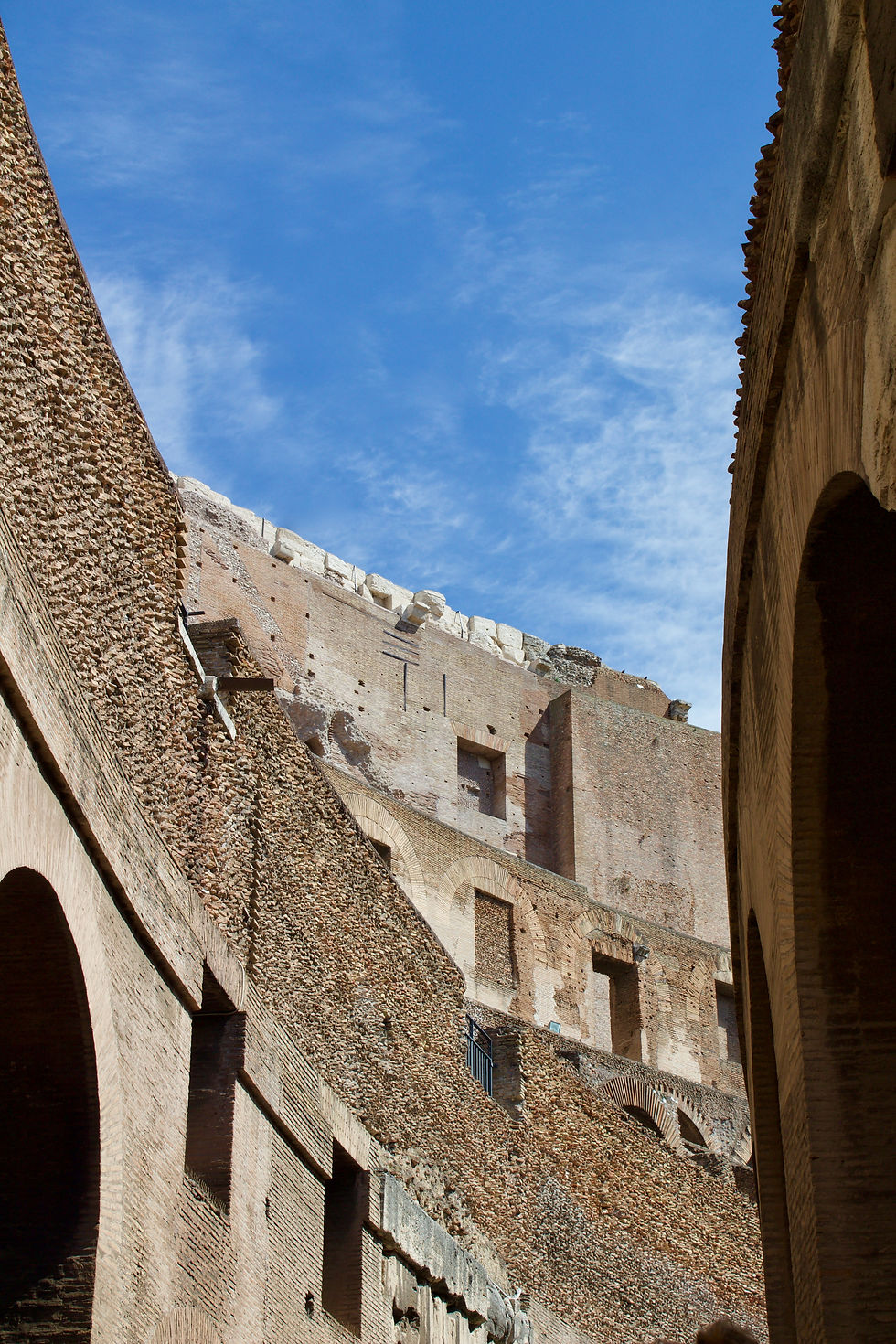
The Roman Colosseum’s Legacy, From Construction to Architecture
First things first: Let’s talk about how the Colosseum, also known as the Flavian Amphitheatre, even came to be.
As you can tell, this entertainment epicentre is an architectural marvel that has quite literally withstood the test of time. The Colosseum, or Colosseo, was built between 70 and 80 AD under the emperors Vespasian and Titus of the Flavian Dynasty—yup, this iconic structure took a mere decade to complete, an impressive feat given its grand scale. The place was originally and simply called the ‘Amphitheatre’ (Amphitheatrum), or unofficially as Amphitheatrum Caesareum (‘Ceasar’s Amphitheatre’), but it was changed to ‘the Colosseum’ when the massive bronze statue of Nero fashioned as a solar deity was placed at the entrance of the Domus Aurea.
Made from travertine limestone, volcanic rock, and concrete, the Colosseum showcases the ingenuity of Roman engineering. It stands at an incredible 48 metres (157.5 feet) high and with a circumference of 527 metres (1,729 feet), meaning that it could easily dwarf a modern American football stadium or even a European football/soccer stadium. Its oval shape spans 189 by 156 metres (620 by 511 feet), making it the largest amphitheatre ever built. When you’re standing amid it all—or even admiring it from outside—it’s incredulous that it was constructed so enduringly, with such attention to deal, and so massively nearly two thousand years ago.
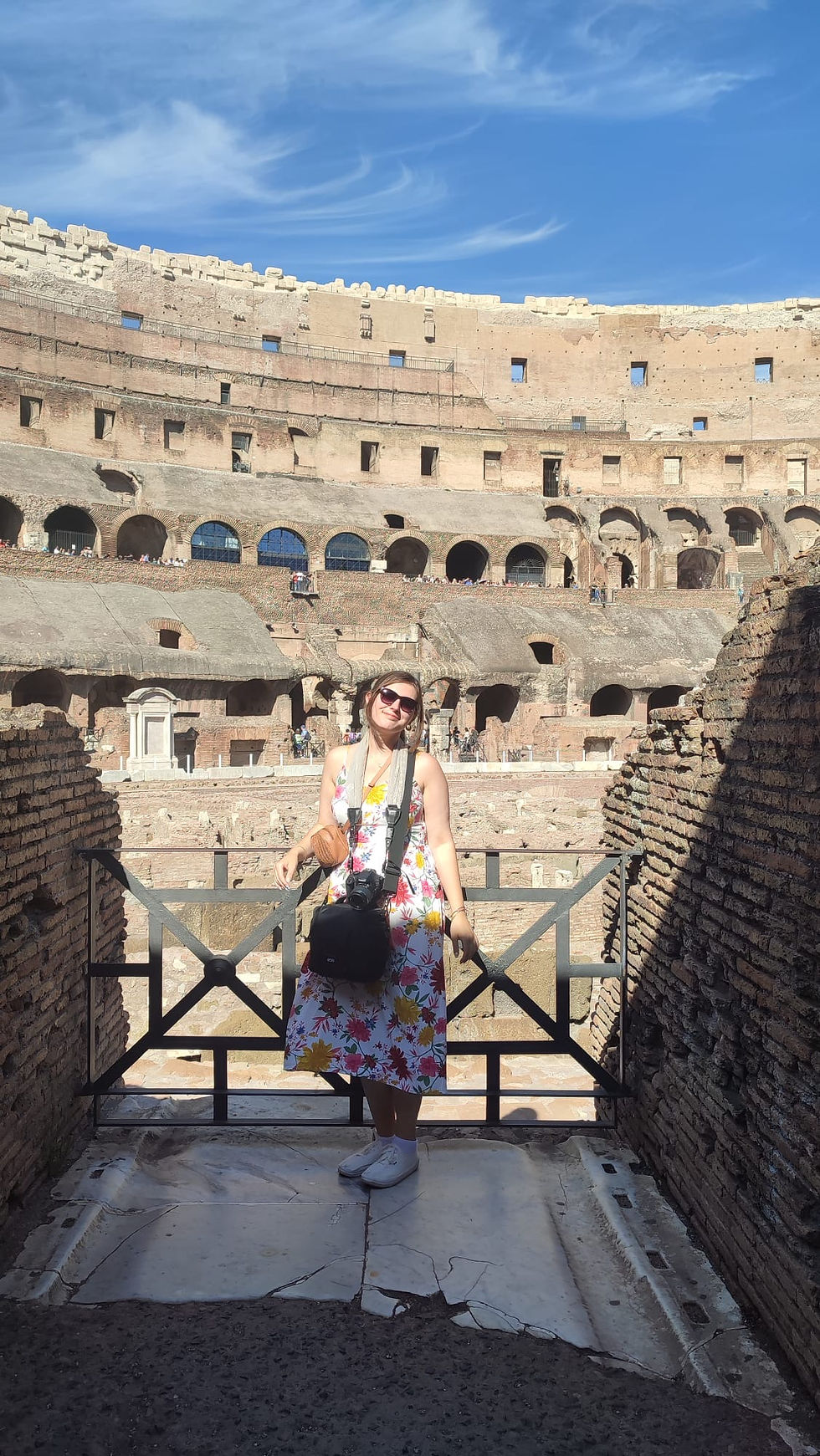
The Roman Colosseum’s design included 80 entrance arches, allowing for efficient crowd control as people across the city flocked into the building seeking entertainment; this was necessary when you consider that it accommodated between 50,000 and 80,000 spectators. Its tiered seating arrangement provided clear sight lines for everyone, from the emperor seated near the area to the common, poorer citizens in the farthest rows.
Within the Colosseum, the Romans employed complex systems of vaults and arches, distributing weight evenly and ensuring the structure’s stability. Plus, an intricate network of tunnels and chambers beneath the arena floor facilitated the seamless execution of events.
Gladiators and Games in Ancient Roman Entertainment
Seamless execution of events, you say? Yep, unsurprisingly, this is another thing the Romans set up incredibly.
Remember that the Colosseum was not just a building, but the epicentre of Roman entertainment for roughly 450 years. The sheer variety and scale of events held within its walls testify to Rome’s grandeur and, occasionally, its brutality. The most famous events were the gladiatorial games, where trained fighters, often enslaved people or prisoners of war, battled for their freedom and glory. These matches could be solo duels or grand melee battles, captivating the audience with their raw intensity.
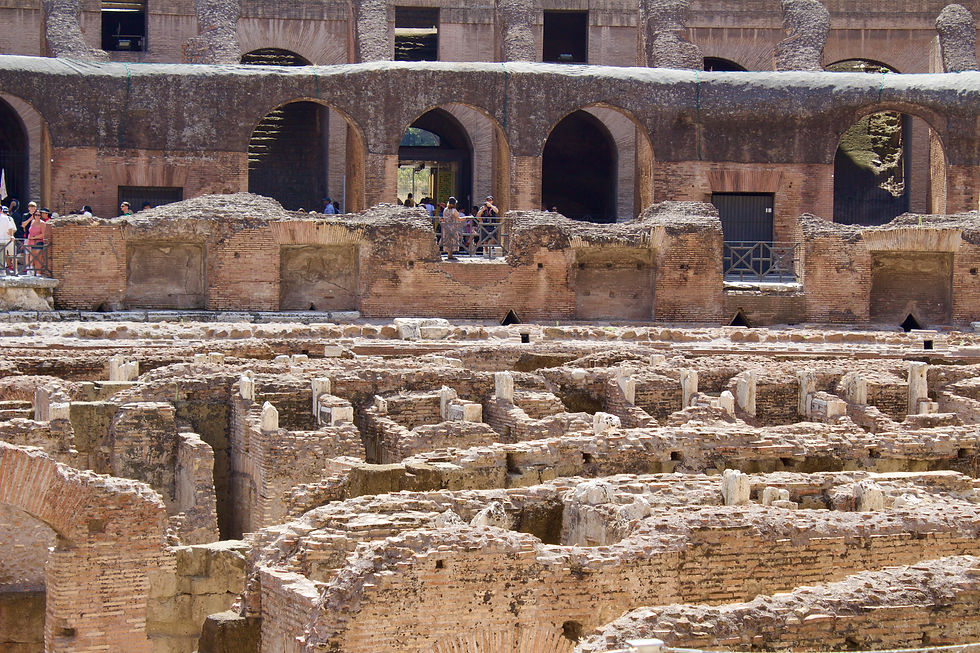
While I was visiting, I learned (from my trusty audio guide) that, unlike many other societies at the time, the Romans could almost be viewed as ‘kind’ for allowing these criminals or POWs to fight for their lives, as the alternative would be execution—albeit, I feel like the word ‘kind’ is a stretch, but you get what I’m saying. Ultimately, it still sounds brutal, but I guess it’s better to have a literal fighting chance than nothing at all and facing certain death? Maybe? Maybe not?
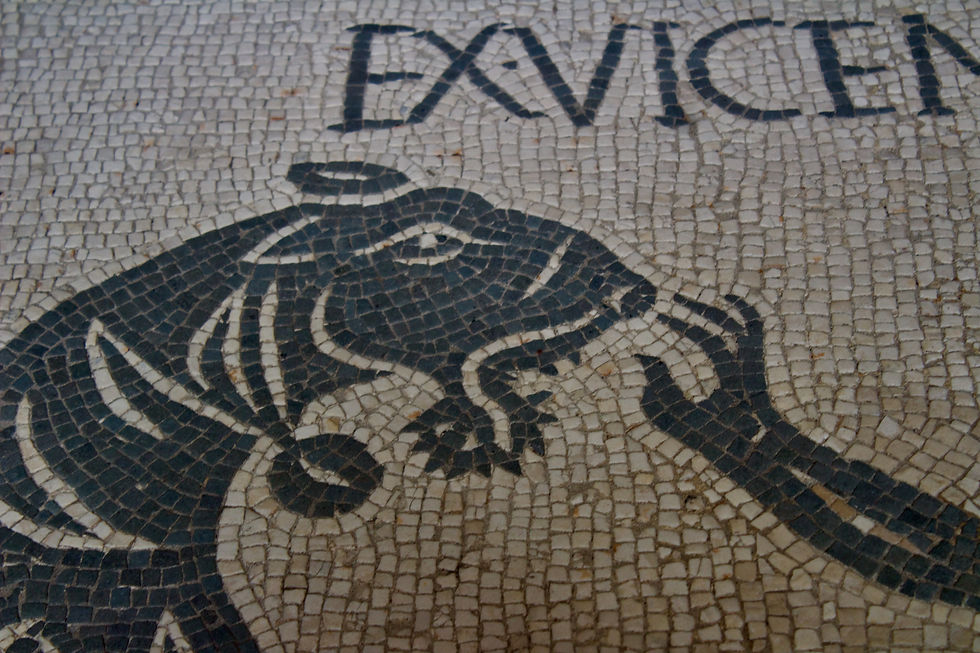
There were also venationes, or wild animal hunts, which was another crowd favourite. Exotic beasts from across the empire—lions, tigers, bears (oh, my), elephants, you name it—were brought to the Colosseum, showcasing the reach and wealth of Rome while providing thrilling spectacles for the masses. As sad as this is, looking at it objectively is fascinating. Of course, not because animals were being brought to the slaughter (or maybe to kill some high-and-mighty gladiator), but the process through which these animals were revealed to eager onlookers.
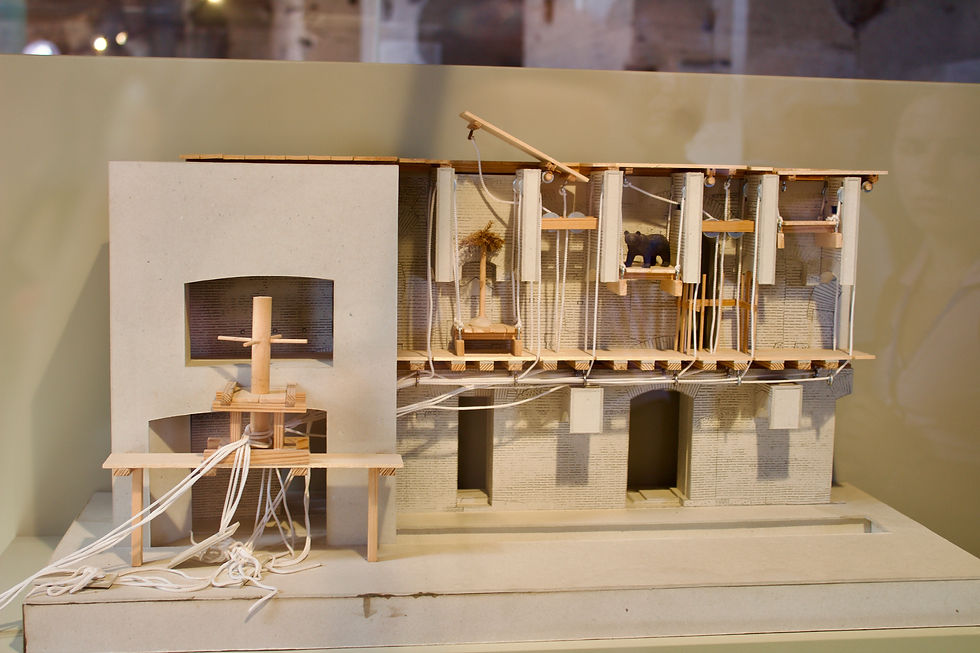
Essentially, they used 28 giant elevators powered by enslaved people, which worked on a pulley system to raise the crocodile, boar, wolf—you name it—over 7 metres (24 feet) up to the arena like Taylor Swift greeting her audience in a new city on the Eras Tour. Hundreds of thousands of animals were used throughout the Colosseum’s active years to entertain Romans. At this point, the awaiting warrior, specially trained individuals known as venatores and bestiarii, would begin their elaborately staged hunt. And, okay, I know I said that most people were given a chance to fight for their freedom, but in some cases, Roman authorities were known to release wild animals into the arena as a form of capital punishment. These prisoners, tied to stakes, were mauled to death and often even eaten alive in what was referred to as damnatio ad bestias (or ‘condemnation to the beasts’). These really were a ruthless bunch of people if you really think about it.
The Colosseum also hosted a number of other events, including crucifixions (yikes) and the flooding of the arena to stage mock naval battles called naumachiae. These elaborate recreations of famous sea battles required intricate engineering and added a splash of maritime excitement to the roster of events.
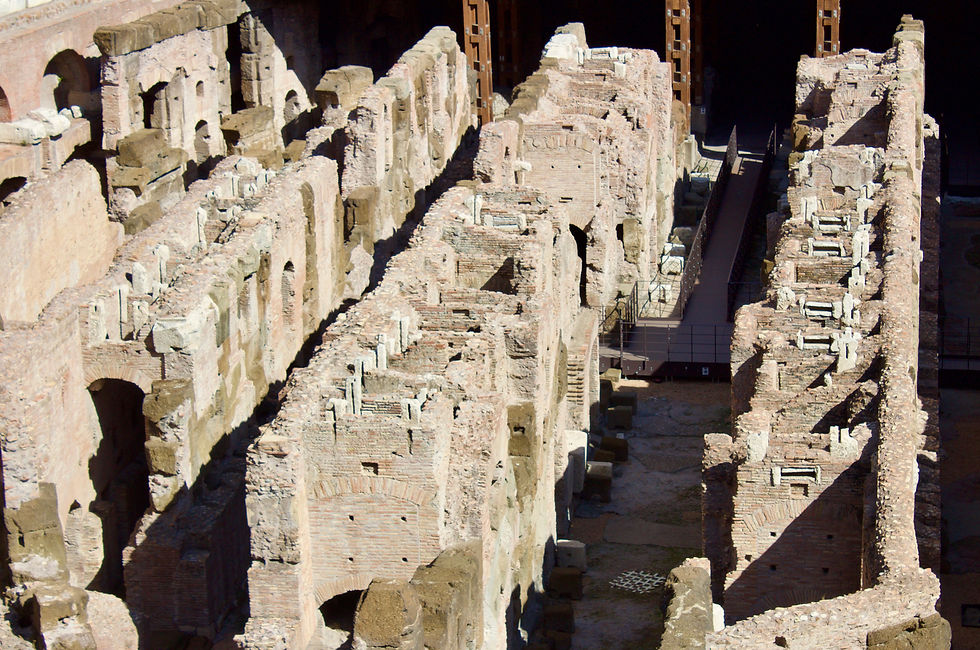
Stories of the Roman Colosseum
Behind the grandeur of the Roman Colosseum lie countless human stories—tales of courage, desperation, and ambition in the fight for fame and celebrity status. When primary sources talk about their first-hand experiences of the Flavian Amphitheatre, these narratives add a personal touch to the imposing stone walls, reminding us of the lives once lived within its shadow as spectators, fighters, or prisoners awaiting certain death.
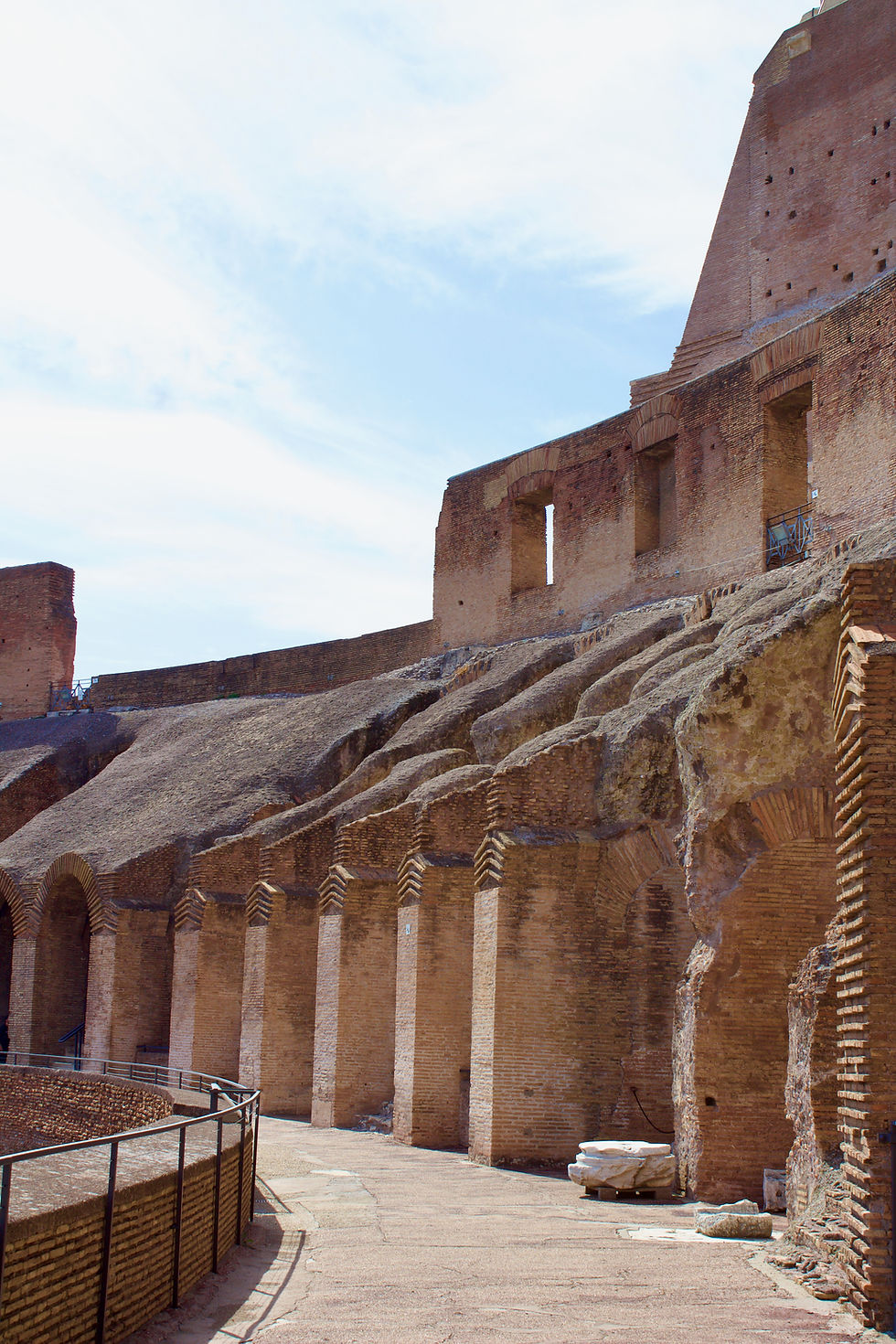
The games held in the Colosseum were not merely for entertainment; they were a means for emperors to gain favour and demonstrate their power amongst the people. Titus famously held 100 days of games to celebrate the Colosseum’s opening, showcasing his generosity and the might of the Roman Empire (which involved many venationes, in which 9,000 animals were slaughtered in fights throughout those 100 days).
During the Flavian Amphitheatre’s use, many gladiators achieved celebrity status, as well. Their exploits were chronicled and celebrated, and people treated them similarly to how A-listers are admired by people today…so much so that vials of their sweat and blood were sold. Some believed that gladiator blood held magical powers, with some women going as far as sneaking onto battlefields to dip their hairpins in it. Their sweat was also mixed into perfumes, as people believed it to be an aphrodisiac. It’s no wonder that figures like Spartacus—just one example embodying the spirit of the Roman Colosseum’s warriors—fought not just for survival, but for honour and glory.
The Colosseum thus became a melting pot of Roman society. From senators in the prime seats to ordinary citizens in the upper tiers, all these people came together to witness the spectacles, sharing a common cultural experience that transcended social divides.
The Decline of the Colosseum
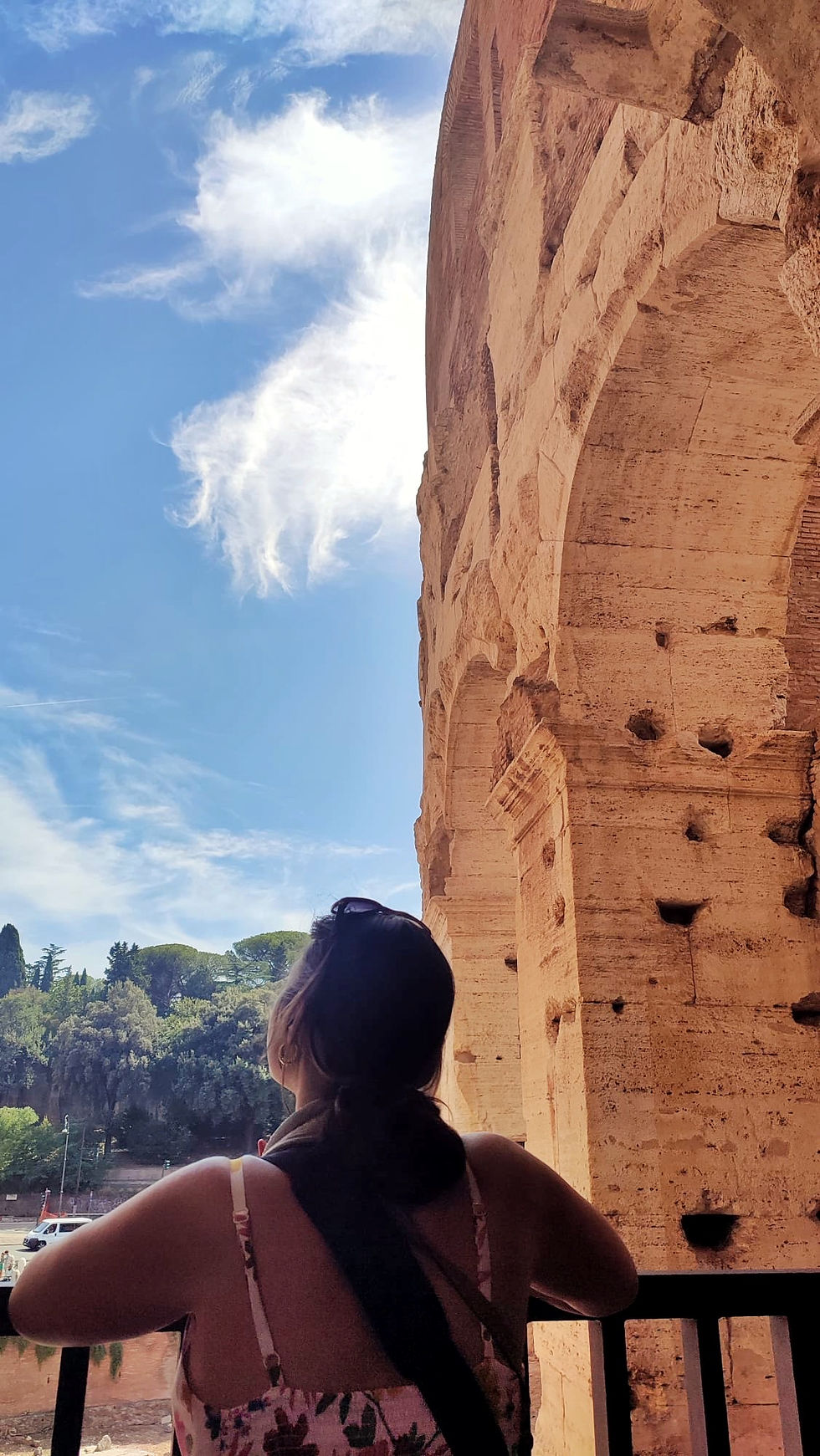
Unfortunately, many great things come to an end. Thus, the Colosseum’s history is not just one of triumph, but also of decline and decay. Understanding its journey from a bustling ‘hotspot’ arena to a silent ruin, at least to me, adds depth to my appreciation of this ancient monument.
For starters, earthquakes in 847 AD and 1231 AD caused significant damage to the structure, leading to its southern side's collapse. From here, the Colosseum’s ruinous state as we see it today is a testament to these initial powerful forces of nature. Over the centuries, the Colosseum was then plundered for its materials. Marble façade stones were repurposed for other buildings, including St. Peter’s Basilica. Interestingly, this significantly reflected Rome's changing priorities and fortunes from a polytheistic religious system to a monotheistic Catholic Church.
Despite its decline, efforts to preserve and restore the Roman Colosseum began as early as the 18th century—and we should all be grateful for that! Today, it stands not only as a monument to ancient Rome, but also as a symbol of the enduring value of cultural heritage and how, despite being long collapsed, it shows just how powerful the Roman Empire once was.
Viewing the Colosseum as a Modern Marvel

Fast forward to the present day, and the Colosseum continues to captivate millions of its visitors each year. Its testament to history and architectural resilience offers a unique experience that bridges past and present for the modern admirer. After all, the Colosseum is one of the most visited landmarks in the world (and is a UNESCO World Heritage Site), drawing around 7 million tourists annually! Cool, huh?
Guided tours provide in-depth historical insights, bringing the ancient arena to life for modern visitors. However, you can also take along an audio guide, like I did, and get a super cool experience that allows you to go through at your own pace. I really enjoyed this, as I could stop and admire things for a bit longer than you might be able to with a large group of people led by a tour guide.
Beyond tourism, the Colosseum has become a global symbol of resilience and cultural heritage. It frequently hosts concerts and events, blending contemporary culture with ancient history in a setting like no other. Continuous restoration efforts ensure that the Colosseum remains a well-preserved historical site that can be used carefully even today. These projects balance maintaining its ancient integrity while allowing safe access for millions of visitors.
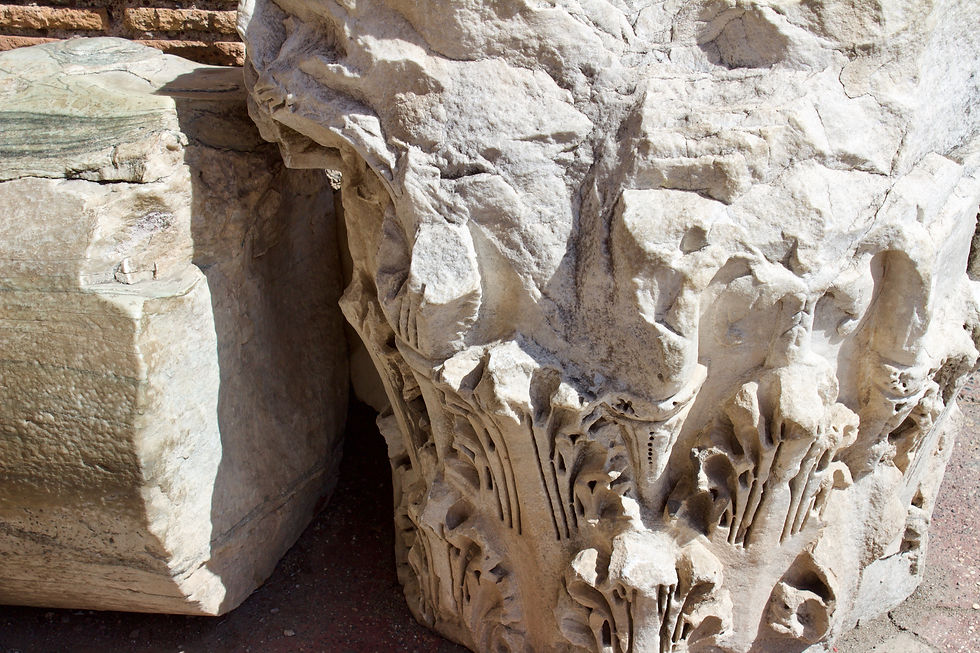
Tips for Your Visit to the Roman Colosseum
Visiting the Colosseum is more than just a tick on your travel checklist—it’s an immersive experience that offers a glimpse into ancient Rome. So, how can you make the most of your trip here?
For one, make sure you book your time-slotted ticket well in advance to make sure that you’re getting it for the best price (not having to buy off of ‘scalpers’ in front of the Colosseum for an astronomical price on the day of) and can prepare for your time there accordingly. Preferably, visiting early in the morning or late in the afternoon is best to avoid the crowds and the blistering sun while enjoying the Colosseum in a more peaceful setting. The soft light during these times also makes for excellent photographs, all while avoiding sunstroke (it’s a win-win, I’d say).
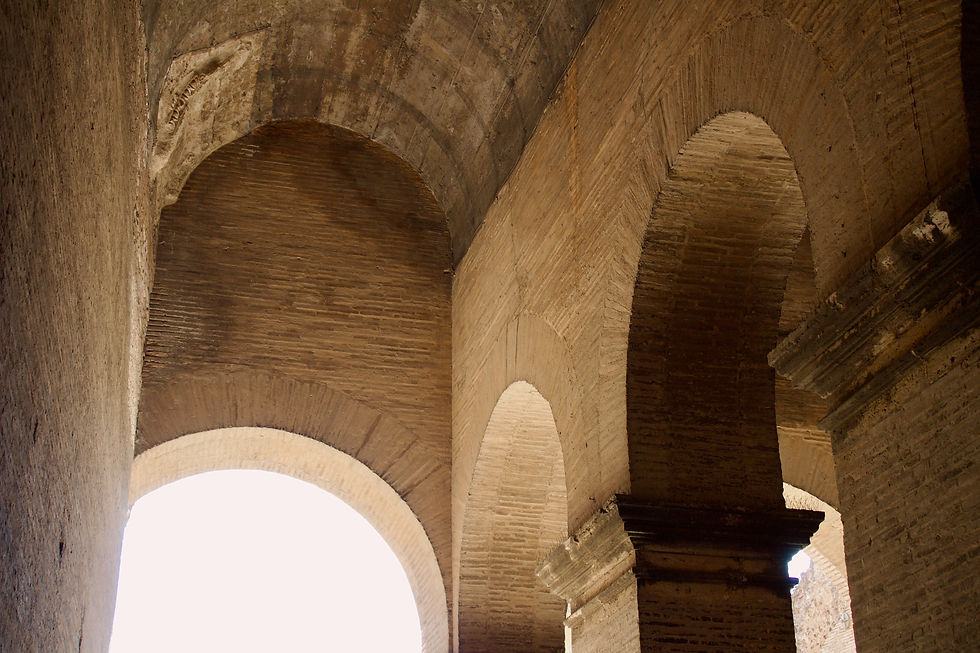
You can opt for a guided tour to gain deeper insights into the history and architecture of the Colosseum. Many of these tours include access to restricted areas, such as the underground chambers and the upper tiers, providing a more comprehensive experience. I would have loved to see these, but they were sold out! However, like I said, I also really enjoyed the audio self-guided tour, where I could go around at my own pace without feeling rushed. There are definitely pros and cons to each.
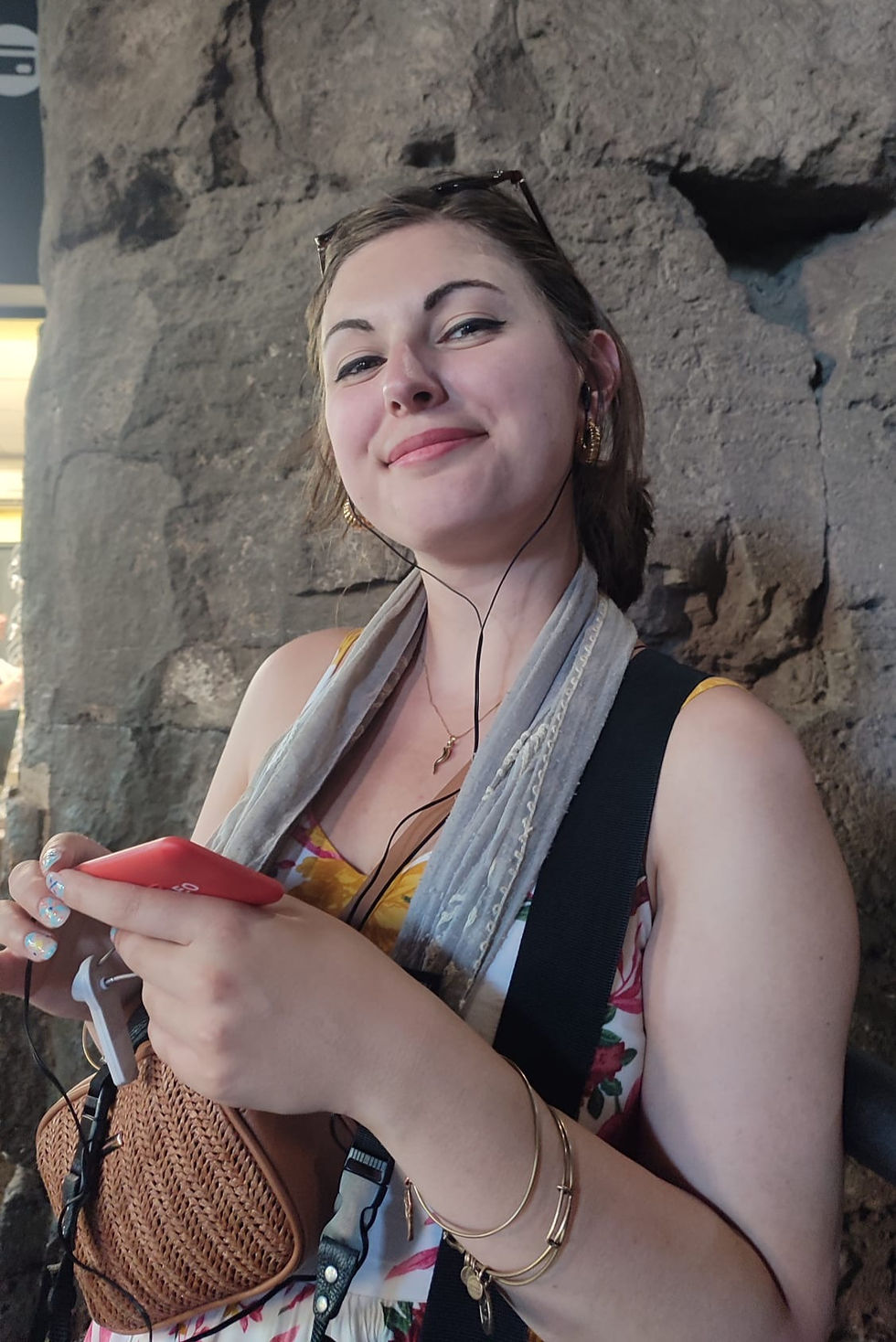
Remember that the Colosseum is part of the archaeological park that includes the Roman Forum and Palatine Hill—getting a combined ticket allows you to also explore these interconnected sites, offering a fuller picture of ancient Roman life. This whole other section of the park is definitely worth visiting, as well.
All in All
The Roman Colosseum is more than just a relic of the past; it’s a living testament to the ingenuity, ambition, and spirit of ancient Rome and the Roman Empire. Its towering arches and intricate history beckon travellers from around the world to step into the shoes of gladiators and emperors, if only for a moment.
Travel to Rome and witness the grandeur of the Colosseum for yourself—because history is best experienced firsthand.

What an incredible, once in a lifetime trip! I would love to one day cross this experience off my bucket list but, alas, I will settle for living vicariously through your lens!!
I have been to Rome, but I didn't go to the Colosseum. I really enjoyed your post and pictures. Thank you for sharing about your trip.